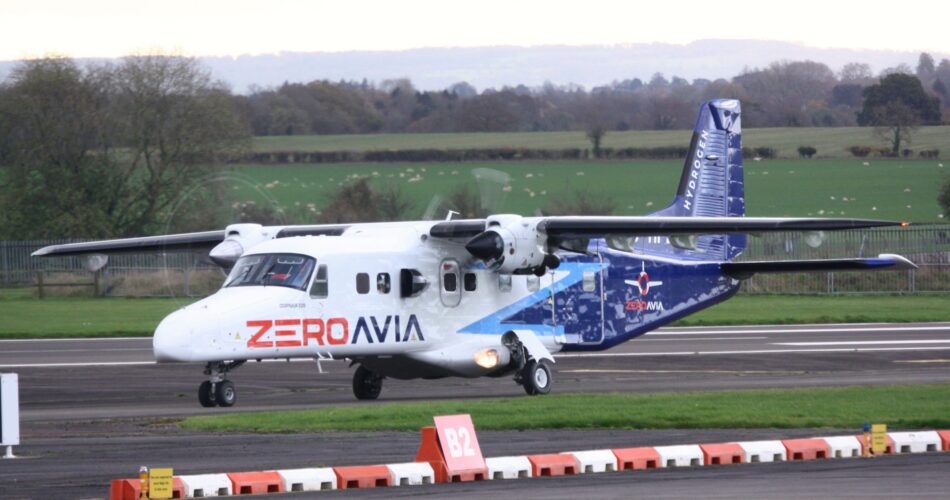
ZeroAvia has been granted permission by the UK Civil Aviation Authority (CAA) to fly a modified version of its Dornier 288 aircraft fitted with a prototype hydrogen-electric powertrain. The company will begin test flights of the 19-seat twin-engine aircraft in January.
The plane features a 600kW hydrogen-electric powertrain on its left wing, while its right retains a conventional Honeywell TPE-331 stock engine. The dual design is meant to provide redundancy during testing.
Permission to fly the plane was granted after ZeroAvia conducted extensive ground testing of the aircraft and thoroughly reviewed its development program alongside the CAA. The specifications to test the 19-seater plane were much more stringent than those used to test the company’s six-seat prototype hydrogen-electric model in 2020.
In a press release, ZeroAvia CEO Val Mifakhov stated, “Earning our full Part 21 permit to fly with the CAA is a critical milestone as we develop a zero-emission aviation propulsion system that will be the most environmental and economical solution to the industry’s climate impact. We’re going to be starting 2023 in the best way possible, by demonstrating through flight that true zero-emission commercial flight is much closer than many think.”
Part 21 refers to the regulatory approval process for aircraft design in the European Union and the United Kingdom.
The upcoming tests set the stage for ZeroAvia to develop a commercially ready version of the ZA600 by the end of 2023, with plans to begin commercial flights of the hydrogen-powered plane by 2025. When test flights begin, the Dornier 228 will become the largest plane ever to fly using a hydrogen-electric powertrain.
Source: PR Newswire
Source link



